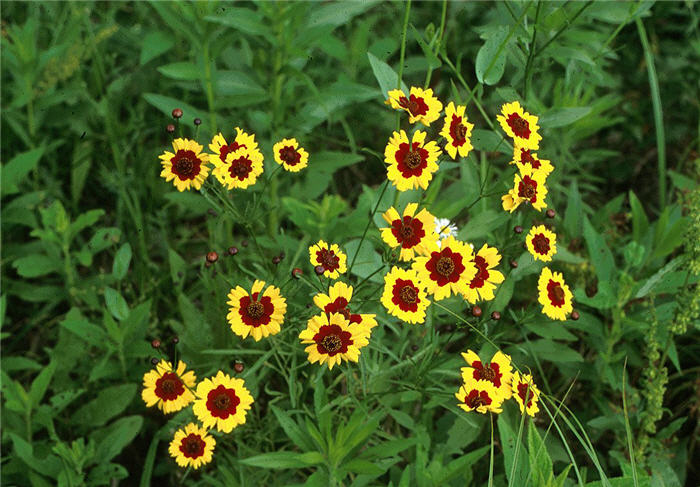| Botanical Name: Coreopsis tinctoria | |
| Common Name: Plains Coreopsis |

-
Anatomy
-
Culture
-
Design
Plant Type
Annual
Height Range
1-3'
Flower Color
Red, Yellow
Flower Season
Summer, Fall
Leaf Color
Light Green
Bark Color
n/a
Fruit Color
n/a
Fruit Season
n/a
Sun
Full
Water
Low, Medium
Growth Rate
Fast, Moderate
Soil Type
Sandy, Clay, Loam, Rocky, Unparticular
Soil Condition
Average, Poor, Well-drained, Dry
Soil pH
Neutral, Basic
Adverse Factors
n/a
Design Styles
English Cottage, Meadow, Seascape
Accenting Features
Showy Flowers
Seasonal Interest
Summer, Fall
Location Uses
Entry, Perennial Border
Special Uses
Cut Flowers, Mass Planting, Naturalizing
Attracts Wildlife
Butterflies
Information by: Stephanie Duer
Photographer: Susan Frommer
Photographer: Susan Frommer
-
Description
-
Notes
This is an annual coreopsis, native to the Central Plains. Blooms are solitary, daisy-like flowers (to 1-2 inches in diameter) and feature yellow rays with reddish brown center disks. Each ray is toothed at the tip and spotted reddish-brown at the base. Flowers typically bloom over a long late spring to fall period. It makes a lovely cut flower, but is also enjoyed by butterflies. It grows 2 to 3 feet tall and about half as wide.
Grow well-drained soil in full sun to light shade. Performs well in poor sandy or rocky soils. Tolerant of heat, humidity and some drought. Tolerates dry to medium moisture. Promptly deadheading spent flowers may encourage additional bloom and prevent any unwanted self-seeding, though its freely self-seeding nature isn't a bad thing in something this cute.